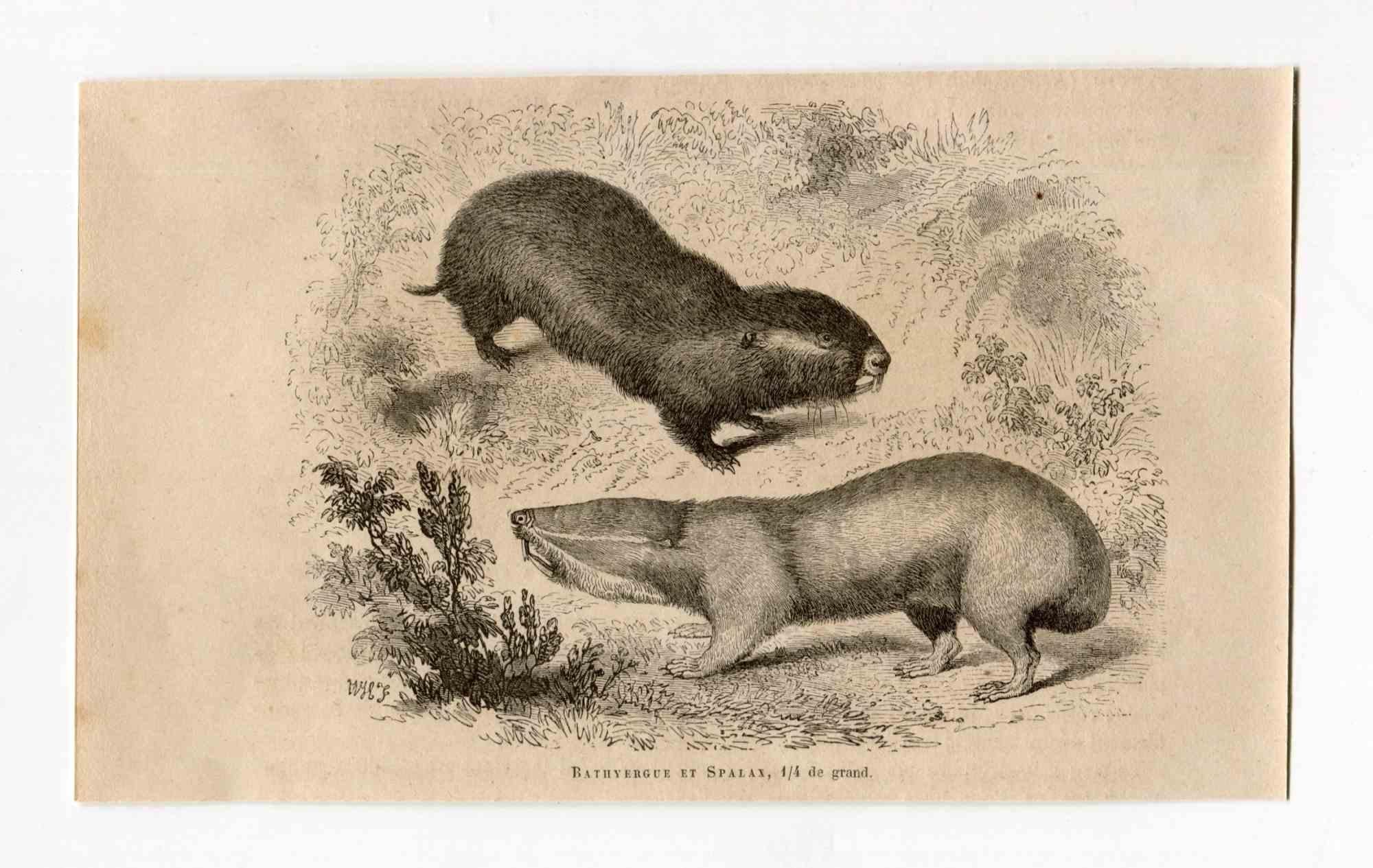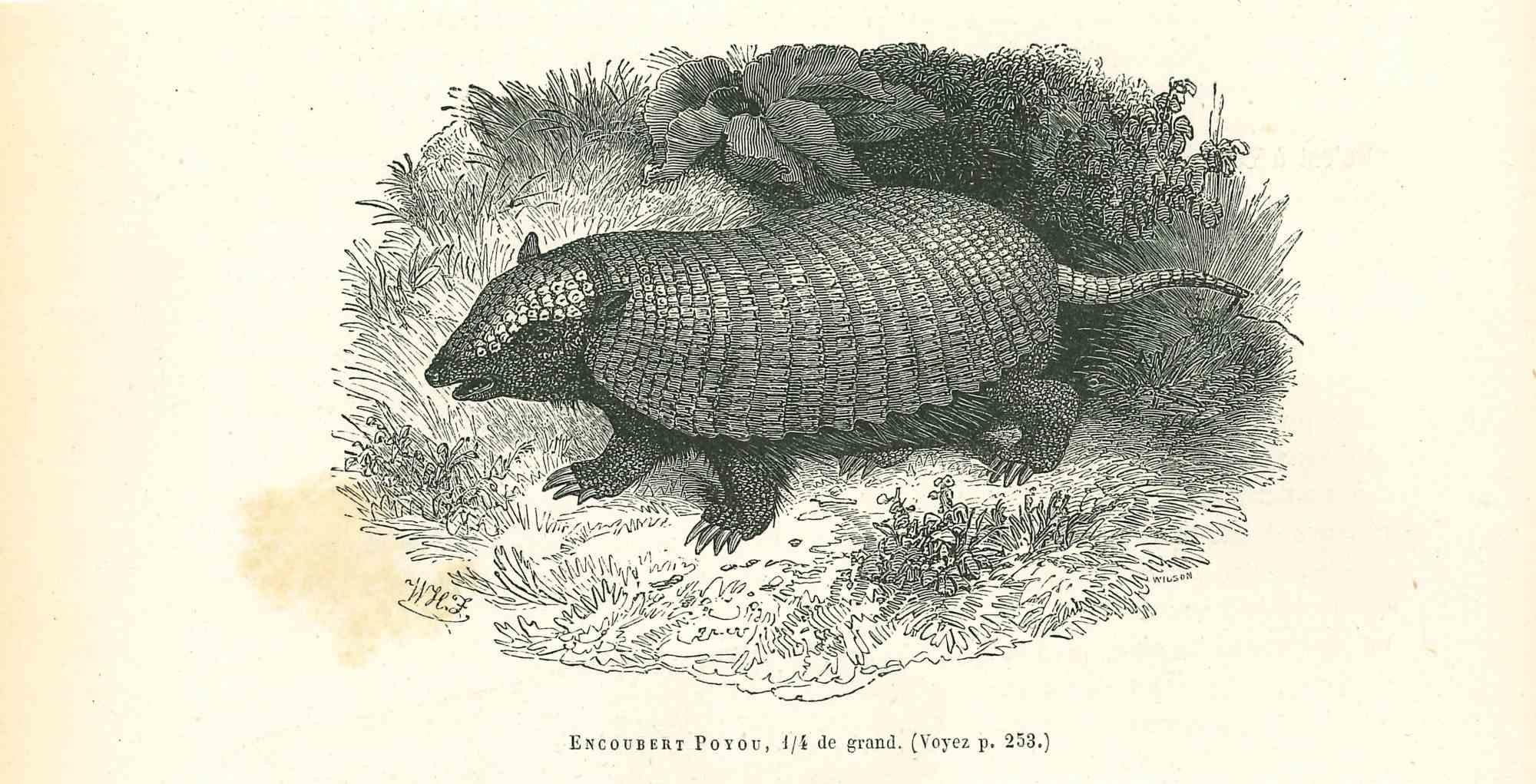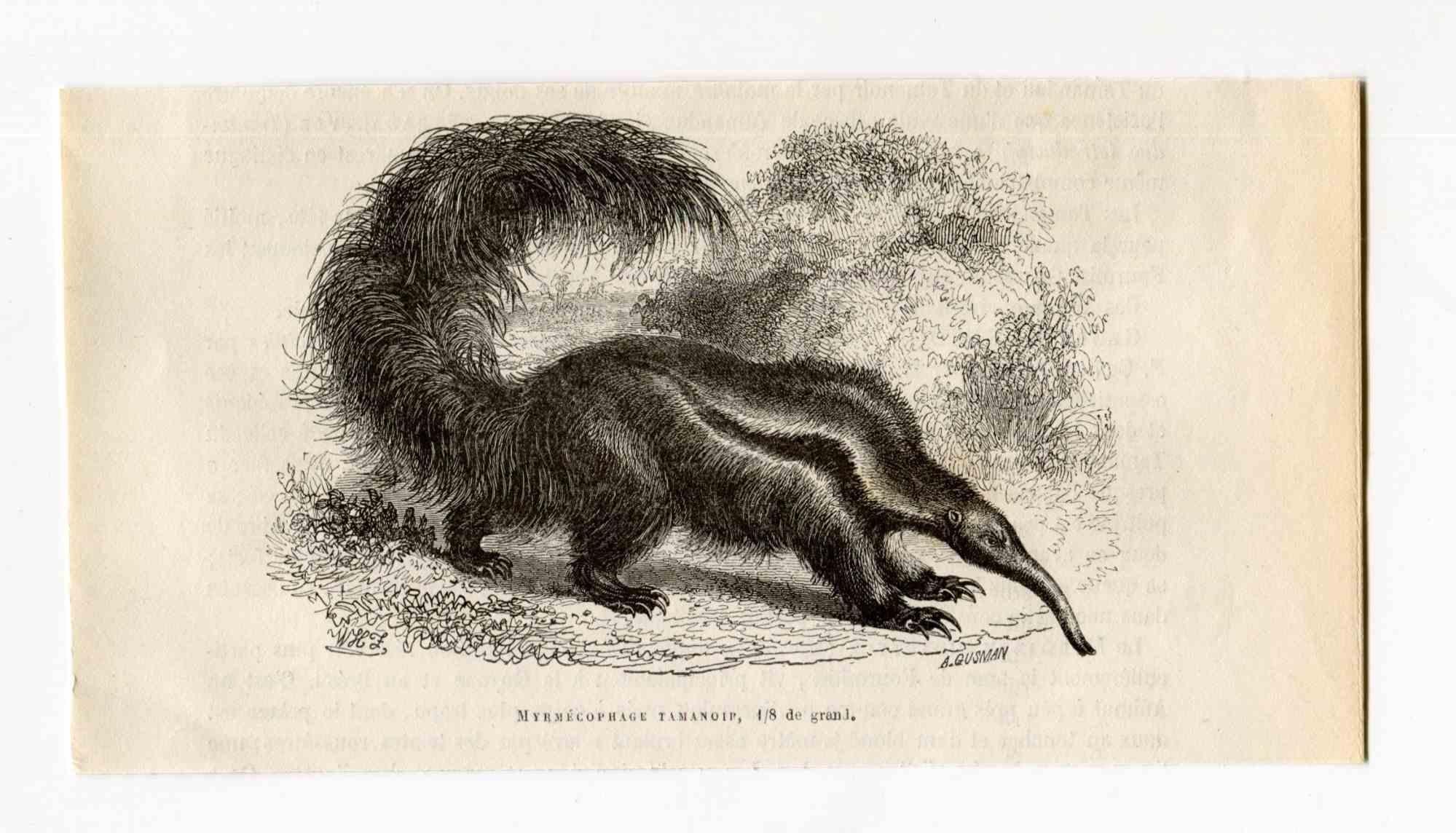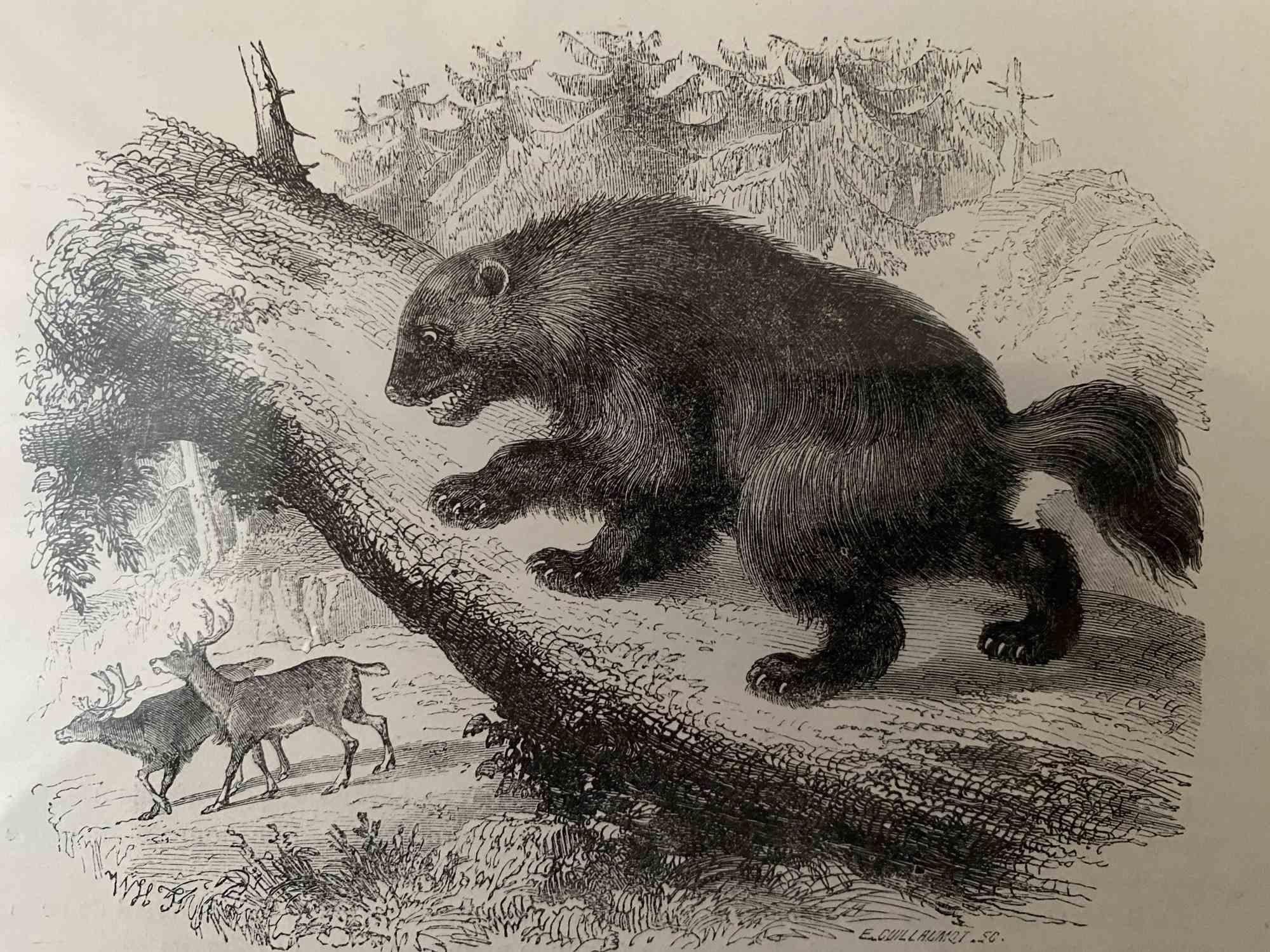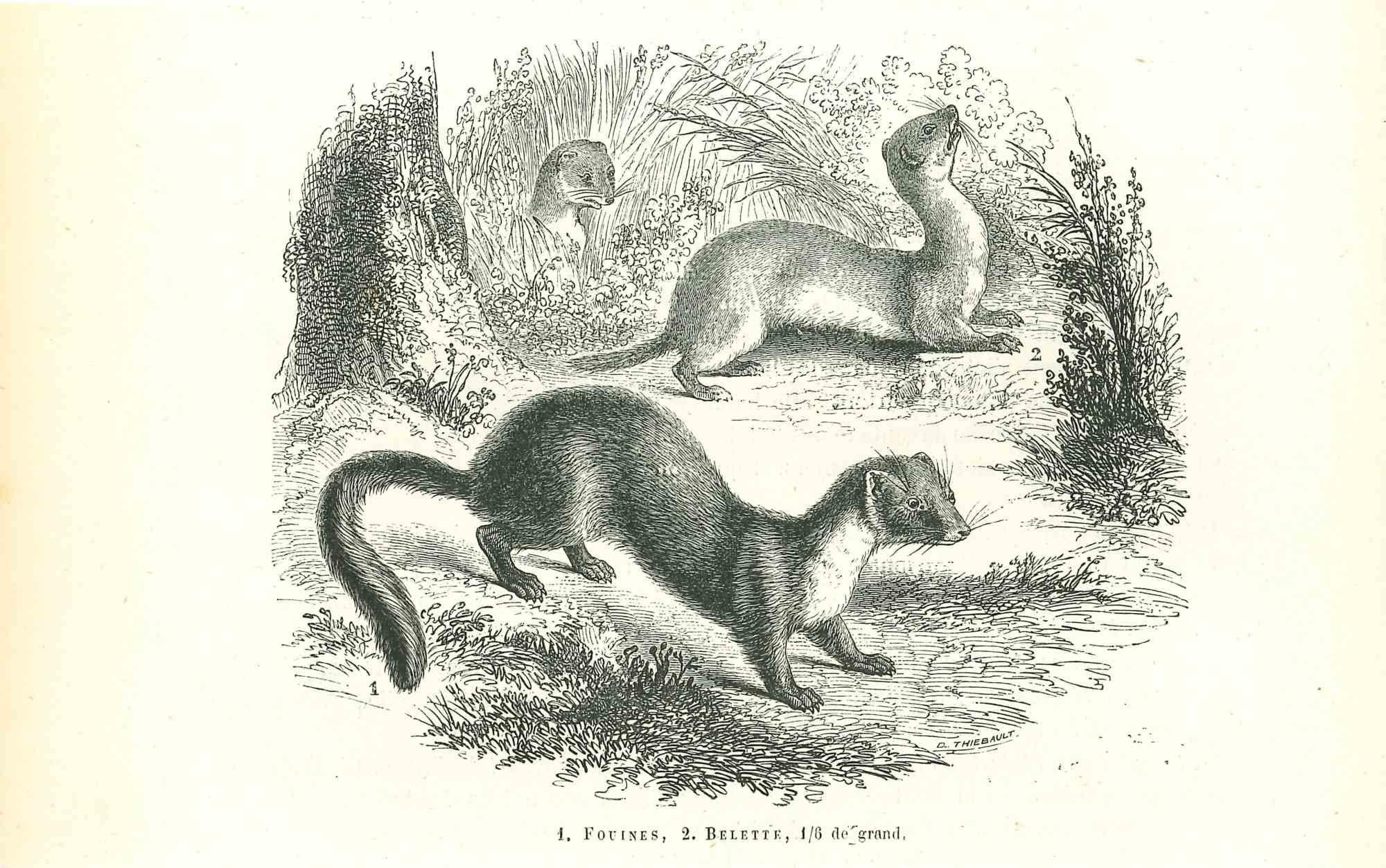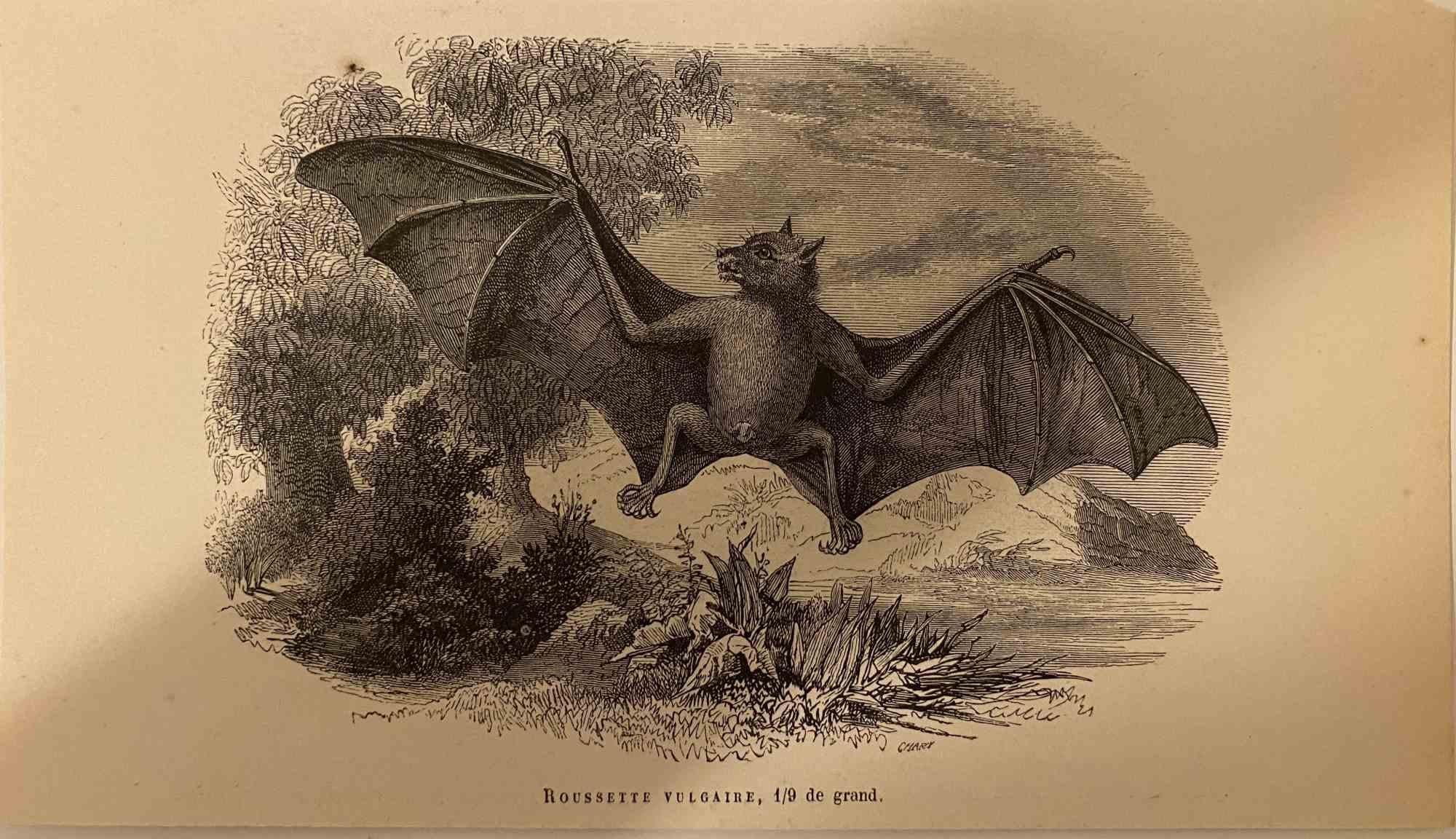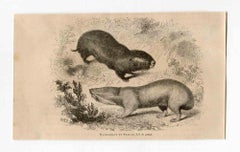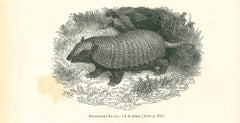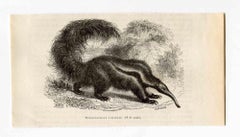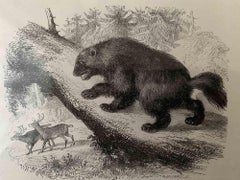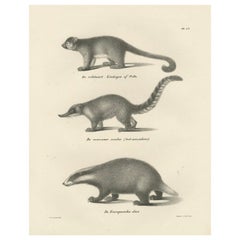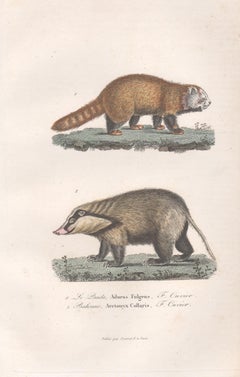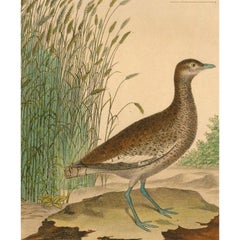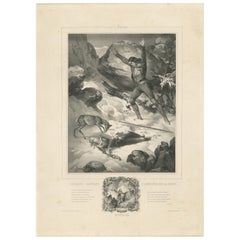Items Similar to Blaireau de France - Lithograph by Paul Gervais - 1854
Want more images or videos?
Request additional images or videos from the seller
1 of 2
Paul GervaisBlaireau de France - Lithograph by Paul Gervais - 18541854
1854
$237.35
£177.22
€200
CA$333.47
A$364.86
CHF 188.27
MX$4,369.12
NOK 2,390.12
SEK 2,239.31
DKK 1,523.46
About the Item
Blaireau de France is an original lithograph on ivory-colored paper, realized by Paul Gervais (1816-1879). The artwork is from The Series of "Les Trois Règnes de la Nature", and was published in 1854.
Good conditions.
Titled on the lower. With the notes on the rear.
The series of artworks of "Les Trois Règnes de la Nature" represent animals through deft strokes and precise anatomical studies, which include its movement, behavior, shape, and structures of the body expressed at the same time aesthetically creatively and scientific too, usually with a beautiful landscape in the perspective or in the picturesque scenery.
Paul Gervais (Paris, 26 September 1816 - 10 February 1879) was a French zoologist and paleontologist, obtained a doctorate in science and medicine, obtained a doctorate in science and medicine from 1841 he opened the Department of Zoology and Anatomy compared to the Faculty of Science of Montpellier, where he presided over in 1856. Between 1848 and 1852 he received his important opera French Zoology and Paleontology.
- Creator:Paul Gervais (French)
- Creation Year:1854
- Dimensions:Height: 4.34 in (11 cm)Width: 6.89 in (17.5 cm)Depth: 0.08 in (2 mm)
- Medium:
- Movement & Style:
- Period:
- Condition:Insurance may be requested by customers as additional service, contact us for more information.
- Gallery Location:Roma, IT
- Reference Number:Seller: T-1272851stDibs: LU65039205482
Paul Gervais
Paul Gervais (Paris, 26 September 1816 - 10 February 1879)
About the Seller
4.9
Platinum Seller
Premium sellers with a 4.7+ rating and 24-hour response times
1stDibs seller since 2017
7,758 sales on 1stDibs
Typical response time: 2 hours
- ShippingRetrieving quote...Shipping from: Monaco, Monaco
- Return Policy
Authenticity Guarantee
In the unlikely event there’s an issue with an item’s authenticity, contact us within 1 year for a full refund. DetailsMoney-Back Guarantee
If your item is not as described, is damaged in transit, or does not arrive, contact us within 7 days for a full refund. Details24-Hour Cancellation
You have a 24-hour grace period in which to reconsider your purchase, with no questions asked.Vetted Professional Sellers
Our world-class sellers must adhere to strict standards for service and quality, maintaining the integrity of our listings.Price-Match Guarantee
If you find that a seller listed the same item for a lower price elsewhere, we’ll match it.Trusted Global Delivery
Our best-in-class carrier network provides specialized shipping options worldwide, including custom delivery.More From This Seller
View AllBathyergue - Lithograph by Paul Gervais - 1854
By Paul Gervais
Located in Roma, IT
Bathyergue is an original lithograph on ivory-colored paper, realized by Paul Gervais (1816-1879). The artwork is from The Series of "Les Trois Règnes de ...
Category
1850s Modern Animal Prints
Materials
Lithograph, Paper
Encoubert Poyou - Original Lithograph by Paul Gervais - 1854
By Paul Gervais
Located in Roma, IT
Encoubert Poyou is an original lithograph on ivory-colored paper, realized by Paul Gervais (1816-1879). The artwork is from The Series of "Les Trois Règnes de la Nature", and was pub...
Category
1850s Modern Figurative Prints
Materials
Lithograph
Myrmecophagy - Lithograph by Paul Gervais - 1854
By Paul Gervais
Located in Roma, IT
Myrmecophagy is an original lithograph on ivory-colored paper, realized by Paul Gervais (1816-1879). The artwork is from The Series of "Les Trois Règnes d...
Category
1850s Modern Animal Prints
Materials
Lithograph, Paper
Glouton - Lithograph by Paul Gervais - 1854
By Paul Gervais
Located in Roma, IT
Glouton is an original lithograph on ivory-colored paper, realized by Paul Gervais (1816-1879). The artwork is from The Series of "Les Trois Règnes de la ...
Category
1850s Modern Animal Prints
Materials
Lithograph, Paper
Fouines - Lithograph by Paul Gervais - 1854
By Paul Gervais
Located in Roma, IT
Fouines is an original lithograph on ivory-colored paper, realized by Paul Gervais (1816-1879). The artwork is from The Series of "Les Trois Règnes de la ...
Category
1850s Modern Animal Prints
Materials
Lithograph, Paper
Roussette Vulgaire - Original Lithograph by Paul Gervais - 1854
By Paul Gervais
Located in Roma, IT
Roussette Vulgaire is an original lithograph on ivory-colored paper, realized by Paul Gervais (1816-1879). The artwork is from The Series of "Les Trois Règnes de la Nature", and was ...
Category
1850s Modern Figurative Prints
Materials
Lithograph
You May Also Like
Rare 19th-Century Lithograph of Kinkajou, Coati, and European Badger
Located in Langweer, NL
Rare 19th-Century Lithograph of Kinkajou, Coati, and European Badger
This beautifully detailed 19th-century lithograph showcases three distinct mammal species: the kinkajou (De re...
Category
Antique 1830s Prints
Materials
Paper
Red Panda and Greater Hog Badger, mid 19th French century animal engraving
Located in Melbourne, Victoria
'1. Le Panda, Ailurus Fulgens, F Cuvier 2. Balisaur, Arctonyx Collaris, F Cuvier'
French engraving with original hand-colourimg, circa 1840.
Category
Mid-19th Century French School Animal Prints
Materials
Engraving
Francois Nicolas Martinet (1731-1804) - Engraving, Petite Outarde ou Canepetiere
By François Nicolas Martinet
Located in Corsham, GB
This hand-colored engraving comes from "Histoire Naturelle Des Oiseaux," a famous set of volumes edited by Georges Louis Leclerc, le comte de Buffon (1707-1788). The book was publish...
Category
Early 18th Century Animal Prints
Materials
Engraving
Romantic Era Lithograph – Jocelyn Sauvant Laurence de la Mort, c.1840
Located in Langweer, NL
Romantic antique lithograph of Jocelyn Sauvant, from Lamartine’s literary work, circa 1840. A poetic and emotional 19th-century French composition.
Jocelyn Sauvant Laurence de la Mo...
Category
Antique Mid-19th Century French Prints
Materials
Paper
Antique Dog Lithograph, Taste of Alfred De Dreux, France circa 1870 Wolfhound E
By Alfred de Dreux
Located in SANTA FE, NM
Antique Dog Portrait
Lithograph in the Taste of Alfred De Dreux
Wolfhound E
France, circa 1870
Lithography
25 5/8 x 19 5/8 (28 x 20 frame) inches
Six lithographs of dog portraits....
Category
1870s Romantic Animal Prints
Materials
Lithograph
19th-Century Lithograph of a Skunk and European Otter in Exquisite Detail
Located in Langweer, NL
19th-Century Lithograph of a Skunk and European Otter in Exquisite Detail
This beautifully executed 19th-century lithograph showcases two remarkable mammals: the skunk (Het stinkd...
Category
Antique 1830s Prints
Materials
Paper
More Ways To Browse
Antique French Lithographs
Dali Unicorn
Damien Hirst Jacobs Ladder
Darwins Rhea
Dog Running Painting
Edward Lear Birds
Entomology Cabinet
Florida Birds Art
Fortune Hunter
Francis Hobby
Franklin Voss
Gary Hodges
George Wright Print
Gifford John
Giraffe Etching
Harrison Begay
Henry Moore Zoo
I Destroyed The Tennis Ball
